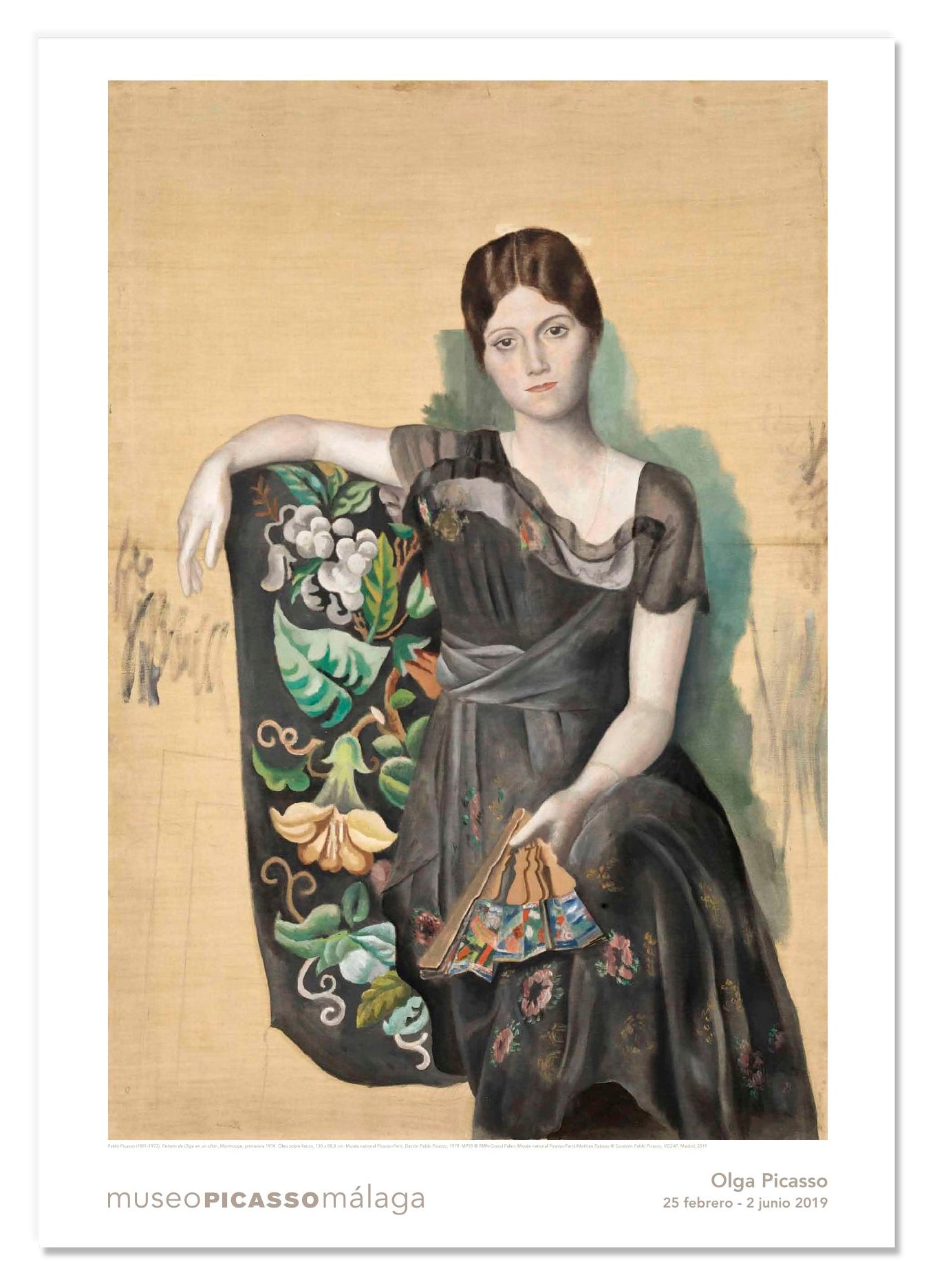
On view
Portrait of Olga
November 10, 1923
Oil on canvas
33 x 24 cm
Museo Picasso Málaga. On deposit from the Ministry of Culture
This is one of the 225 paintings Pablo Picasso personally selected for his first retrospective, which he himself curated, at the luxurious Galeries Georges Petit in Paris on June 16, 1932. The fact that the works were not arranged chronologically hindered their linear interpretation and their usual classification into ‘periods’. Portrait of Olga hung on what was called the ‘family wall’ alongside other iconic pieces by the artist, such as Self-Portrait (Paris, 1901) and Portrait of Olga in an Armchair (Montrouge, spring 1918).
Someone asked me how I was going to hang my exhibition. ‘Badly’, I replied, because an exhibition is like a picture: whether it is well or badly ‘arranged’, it comes to the same thing. What counts is the sense of continuity in ideas.
Picasso, quoted from Tériade’s interview with him for the newspaper L’Intransigeant, Wednesday June 15, 1932.

Learn more
What was happening in 1923?
- Picasso, Olga and Paulo spend the summer at Dinard, in Brittany.
- Howard Carter discovers Tutankhamun’s tomb in Egypt.
- Primo de Rivera leads a coup d’état in Spain.
- The Walt Disney Company is established.


